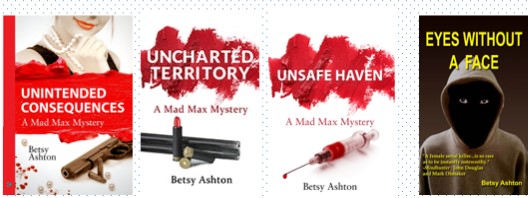then editing is a craft. For me, writing the initial draft of any work brings me a freedom to put anything, and I do mean anything, down on paper. I love getting out of my characters’ way and let them have free rein. That first draft may be full of purple prose, misnamed characters, characters whose physical features change from sentence to sentence. I don’t worry.
Once I’ve finished the first draft, I sit back and think about the characters first. What do they look like? How do they speak? What do they carry in their pockets or purses? I make a list of all these things, so that when I begin crafting a story, I have a reference point. Notice I do this AFTER I’ve written the first draft. Nothing can restrain the initial gush of story.
I then return to each chapter. Is it necessary? Does it move the story along? Does it have or need conflict? What happens in it? If I can’t see the chapter moving the story forward, I cut it out of the longer manuscript and copy it into a file called [Working Book Title] Parking Lot. I may need it again. I may not, but at least it’s not lost.
That done, the fun begins. I mean it. Editing is fun, painful at times, but fun, because that’s when I shape the story. Think of a potter at her wheel. She slaps a blob of wet clay in the center and begins spinning the wheel. Gradually, through a deft touch and no small amount of luck, she shapes the clay into a vase or bowl or whatever the clay wants to become. Words are like clay. Story is like the wheel. My hands are merely a means to revealing a story, much like the hands of the potter pulling a shape from the blob.
Editing is plain hard work. Early drafts are, for me, broad brush strokes to see where the story falls apart. It will, because it hasn’t been finessed at all. Secondary drafts are where I look at every word in every sentence. Is it the right word to convey what I want? Is it a cliche that has to die a rapid death by Delete key? Is it trite, original, fresh, stale? Sometimes, it takes several drafts before I can set a chapter aside. After a few weeks, after I’ve finished all the other chapters, I sit back and reread from page one to “the end.”
Oh what was I thinking? What drivel? No one will ever want to read this. It sucks. Oh, wait, what? That chapter is really pretty good. So is the next one. I think about what makes each chapter sing. I try to replicate it.
And then I ask my loyal beta readers to dive in. Usually, this leads to more revelations about what needs to be fixed. Some are such good readers they can suggest what they expected to read. After a few more edits, I’m finally ready. I put the book out into the world. I cross my fingers in hopes people like it. I read reviews, even the one-star reviews. I engage with readers on social media or old school by phone, in person, or email. Each interaction, each engagement, helps me become a better writer.
I’m in the midst of the secondary draft stage of a book called Out of the Desert, a novel in stories. So far, one chapter of fourteen sings on key. The others are still slightly off key. More work to be done. Bye for now.



I read many books. I often comment to John that so and so could have used a good editor. I often wonder how some books get into print when they obviously need serious editing.
I know how you feel. I particularly dislike suspense stories that leave so many red herrings around they stink up the narrative.
“Julia’s Garland” (fr. Guirlande de Julie)
monuments related to deep
Thank you for your kind remark.